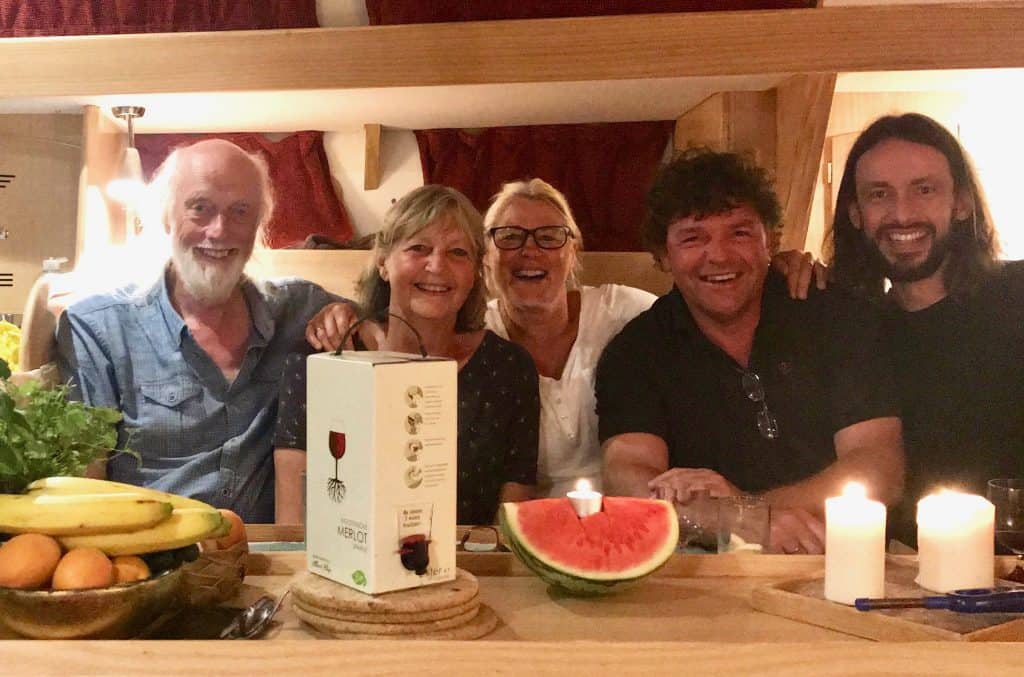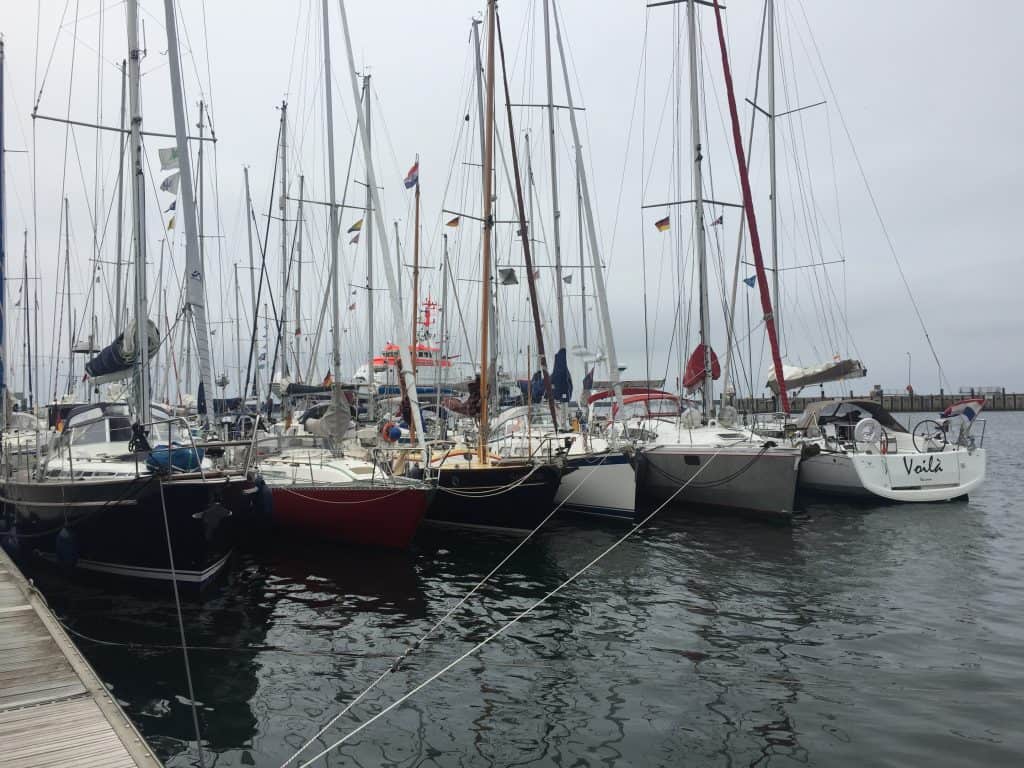After our short visit to the UK we returned to Antipole in Tönning. Our flight was cancelled because of thunderstorms over Gatwick, so it was good to be back on board after the airport chaos.
We had a nice easterly which enabled us to sail down the Eider just on the Genoa. After passing out through the
Helgoland
Helloland is a curious place – two islands in the middle of the German Bight. The main one is red sandstone and quite high. The other, Düne, is flat and sandy.
Helgoland was a Danish possession and then British until 1890 when it
Today, Helgoland is a tourist destination with lots of hotels and holiday apartments. Although German, it is excluded from the EU VAT area and customs union. Its economy largely depends on duty free shopping and the regular ferry trips from the mainland.
We explored the town and walked up to the high ground. It looks like there is not much to do but eat, drink and smoke. There is a lift to the higher ground in case you are too obese for the steps. One day was enough for us.
Yachts berth alongside in the
Spiekeroog
We escaped from our raft and had a good sail south across the shipping lanes to the east Frisian islands, where we waited a few hours for enough rise of the tide to enter the seegat and reach Spiekeroog. This is one of the least busy islands. There are no cars but there is a horse-drawn tramway in summer.
On Spiekeroog, we were joined by Ynskje’s niece Yvonne and her husband Frits. Together we explored the island and walked on the fine beach. The next day we sailed over the wadden (the shallow sandy flats that cover at high tide, following a channel marked by withies. We anchored for lunch and a rest before arriving at the next island westwards Langeoog.
Langeoog
Langeoog is another lovely and relatively unspoiled island which, these days, is a summer tourist resort. It has a railway running from the port to the town but no cars are allowed. Service vehicles are
Here we were joined by Ynskje’s son Dan before Yvonne and Frits departed the next day.

Frits writes:
Last week we had the opportunity to get on board Antipole. We started on the German Isle Spiekeroog. After exploration of the isle, we thought to sail to the next island Langeoog. But the winds were not in the right direction. So we had to motor at the start of our trip. But it gave the opportunity to cross over the so-called ‘Wantij’. The tides ebb and flow through the sea channels on either side of the island to the area between island and coast. In areas with a soft bottom, such as in the Wadden Sea, sludge settles at this location, with the result that the tides are often a shallow zone.
We enjoyed it very much. The wind turned a little in the right direction so that we could hoist the Genoa. Because of the upcoming thunderstorm, it was for a short period of time, but we could feel the sailing powers of Antipole for a little bit.
It was great to meet Daniel onboard on our last evening. We had a great time and were very well looked after by Tony and Ynskje. Thanks for the hospitality we received and looking forward to the next time with fair winds in the right direction.
Tides and Seegats
We have continued to struggle with progress westwards. We need an ebb tide to leave through the
We did get one day of northerly wind and, with Dan as extra crew, made it 52 miles to Borkum, the westernmost of the German islands, situated in the mouth of the
Dan left us here to travel to Berlin. As soon as we arrived in Groningen,

We await the arrival this evening of Tony’s grandsons Kane and Lucas. We will then head off through the canals.
More news in due course.




Hi Tony, Ynskje. Seems like it’s been all westerly winds this summer! Enjoy the canals. At least you get to stop at some nice places. We ended up doing the same thing to get home. Best wishes, Robin and Jane (Grey Wanderer)